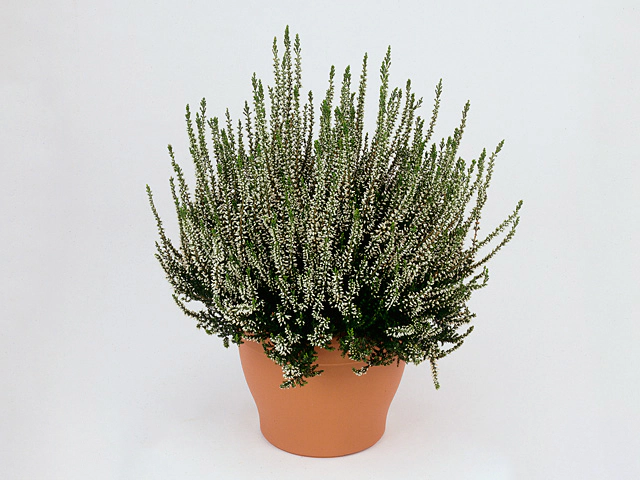Calluna vulgaris Beauty Ladies Victorious

| soil pH requirement | Acid (pH < 4,5); Slightly acidic (pH 4,5 - 6,5) |
| Light conditions | Sunny |
| Moisture requirements | Well-drained |
| Soil type | Sandy; Peaty; Humus rich |
Heather, scientifically known as Calluna vulgaris, is a stunning flowering plant that belongs to the Ericaceae family. Its common names include Scotch heather, Scots heather, and ling. This vibrant and resilient plant is best suited to certain soil conditions, light requirements, and moisture levels.
In terms of soil pH, heather prefers acidic to slightly acidic conditions. It thrives in soils with a pH level below 4.5, but can also tolerate slightly higher pH levels between 4.5 and 6.5. It is important to ensure the soil is well-drained to prevent waterlogging, as heather does not tolerate excessive moisture around its roots.
When it comes to light conditions, heather craves sunlight. It thrives in areas with full sun exposure, as this promotes the best growth and ensures the plants achieve their full potential. Additionally, sunlight helps to enhance the vibrant color of the flowers, making them even more captivating.
Moisture requirements for heather are relatively simple. The plant prefers well-drained soil that is not too wet or too dry. It is important to strike a balance, as heather can suffer from root rot if the soil remains consistently waterlogged. On the other hand, dry soils can also be detrimental to its growth. This makes it essential to provide adequate moisture without overwatering.
In terms of soil type, heather is adaptable and can grow in a range of soil compositions. It thrives in sandy soils, which provide good drainage. However, it can also grow well in peaty or humus-rich soils that retain moisture without becoming waterlogged. This adaptability makes heather suitable for a variety of garden settings.
Roaming across moors and hills, heather is native to Europe and parts of Asia. In the wild, it plays a vital role in supporting biodiversity by providing habitat, shelter, and food for various insects, birds, and mammals. Its beauty is not limited to gardens; heather also plays an important ecological role in its natural habitats.
Heather has long been associated with Scotland and is often featured in traditional Celtic designs and literature. Its delicate flowers, ranging in color from white to shades of pink, purple, and even red, create breathtaking displays. These flowers attract pollinators such as bees and butterflies, making heather a plant that contributes to the overall health of the ecosystem.
The versatility and beauty of heather make it an excellent choice for both garden enthusiasts and environmentally conscious individuals. Whether you are looking to add a touch of color to your garden, attract beneficial insects, or create a Scottish-inspired landscape, heather will undoubtedly be a welcome addition. With its specific soil pH, light requirements, and moisture preferences, it is important to ensure that these conditions are met to maximize the growth and vibrancy of this delightful plant.
Market availability index by month:
| Jan. | Feb. | Mar. | Apr. | May | Jun. | Jul. | Aug. | Sep. | Oct. | Nov. | Dec. |
|---|---|---|---|---|---|---|---|---|---|---|---|
| - | - | - | - | - | - | 1 | 3 | 4 | 3 | 1 | - |